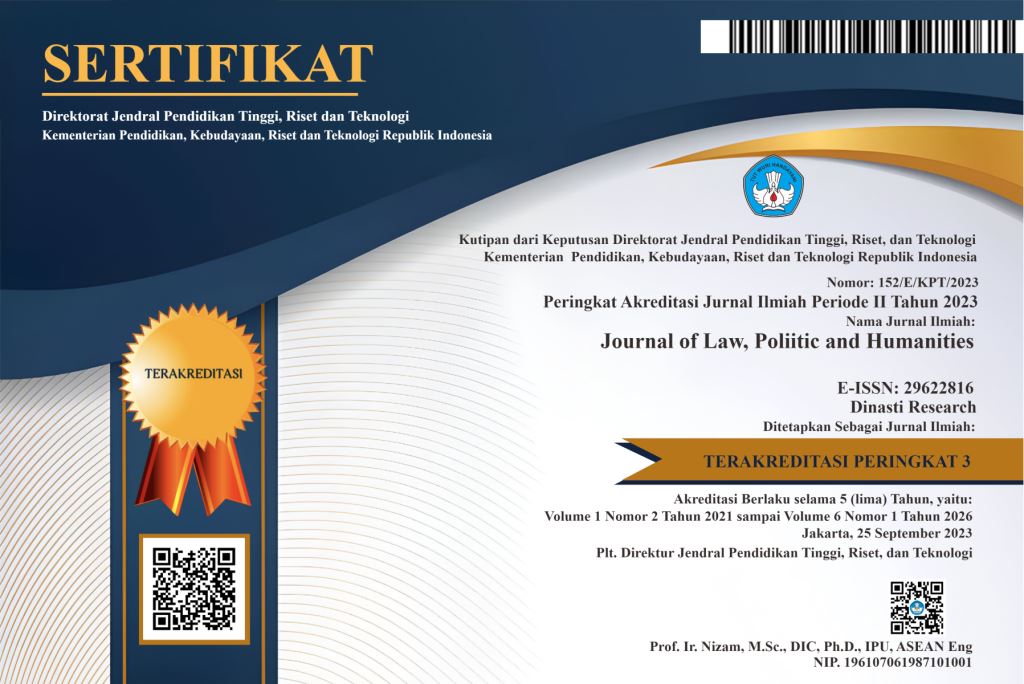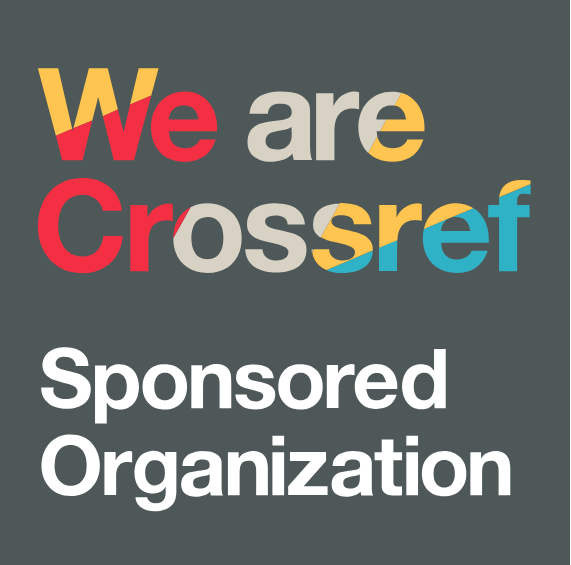Implemenation of Child Friendly City Policy in Singkawang City in 2022-2023 Period
DOI:
https://doi.org/10.38035/jlph.v5i3.1362Keywords:
Policy, Policy Implementation , Child Friendly CityAbstract
This study aims to analyze the implementation of the “Child Friendly City” policy in Singkawang City, which is a strategic initiative to create an environment that is safe, healthy, and supports the development of children as the nation's next generation. Using a qualitative approach, this study collected data through in-depth interviews, direct observation, and analysis of relevant documents to understand the perspectives of various stakeholders, including local government, civil society organizations, educational institutions, and children's communities. The results show that despite strong commitment from the government and cross-sector collaboration, the implementation of this policy still faces various challenges. These challenges include different priorities among actors, budget constraints, and a lack of public understanding of the concept of “Child Friendly City”. In addition, although a non-compliance reporting mechanism is in place, socialization of this mechanism still needs to be improved so that children feel more confident in conveying the problems they face. Thus, this research concludes that the successful implementation of the “Child Friendly City” policy in Singkawang is highly dependent on effective collaboration between all parties, as well as the need for targeted strategies to overcome existing challenges. Hopefully, with a more collaborative and transparent approach, all children, especially those from vulnerable groups, can benefit equally from this policy, thus creating a child-friendly environment and supporting their holistic well-being. This research provides recommendations to improve socialization and education about the policy, strengthen cross-sector collaboration, and increase children's participation in decision-making, in order to achieve the goal of creating Singkawang City as a child-friendly city.
References
Aina, A. Y., & Bipath, K. (2022). Availability and use of infrastructural resources in promoting quality early childhood care and education in registered early childhood development centres. South African Journal of Childhood Education, 12(1), 980.
Atmore, E., Van Niekerk, L. J., & Ashley-Cooper, M. (2012). Challenges facing the early childhood development sector in South Africa. South African Journal of Childhood Education, 2(1), 120-139.
Butarbutar, R. (2020, March). Notional Interest Deduction Regime in Belgium: What Indonesia Should Learn to Design the CFC Regulation?. In 3rd International Conference on Law and Governance (ICLAVE 2019) (pp. 95-102). Atlantis Press.
Carvalho, M. A., & Koteng, Z. (2014). Systematic assessment of the Child Friendly City/District (CFC/D) initiative in Indonesia. UNICEF: Jakarta.
Chiang, B., & Cheng, J. C. Y. (2019). Chinese capital and Chinese cultural capital: A case study of Singkawang, West Kalimantan, Indonesia. The Sociology of Chinese Capitalism in Southeast Asia: Challenges and Prospects, 315-330.
Clair, N., Miske, S., & Patel, D. (2012). Child rights and quality education: Child-friendly schools in Central and Eastern Europe (CEE). European Education, 44(2), 5-22.
Collins, T. M. (2017). A child’s right to participate: Implications for international child protection. The International Journal of Human Rights, 21(1), 14-46.
Ebel, T. (2024). Child-friendly city for all? From bookshelf to reality: a comparative study about the results of guidelines for child participation (Doctoral dissertation).
Greenberg, M. T., Weissberg, R. P., O'Brien, M. U., Zins, J. E., Fredericks, L., Resnik, H., & Elias, M. J. (2003). Enhancing school-based prevention and youth development through coordinated social, emotional, and academic learning. American psychologist, 58(6-7), 466.
Jansson, M., Herbert, E., Zalar, A., & Johansson, M. (2022). Child-friendly environments—What, how and by whom?. Sustainability, 14(8), 4852.
Khumayah, S., Suryadi, S., Turmudzi, D., & Mansyur, M. (2023). Collaborative Governance for Child Friendly Cities inIndonesia: Policy Analysis and Issues inCirebon City, West Java. History of Medicine, 9(1), 633-652.
Maisondra, M. (2023). Cultural Acculturation on the Acceptance of the Role of Chinese Ethnicity in Singkawang City Government. Jurnal Bina Praja: Journal of Home Affairs Governance, 15(2), 261-274.
Malone, K. (2017). Child Friendly Cities: A model of planning for sustainable development. In Designing Cities with Children and Young People (pp. 11-23). Routledge.
Mekonen, Y. (2010). Measuring government performance in realising child rights and child wellbeing: The approach and indicators. Child Indicators Research, 3(2), 205-241.
Nam, H., & Nam, S. I. (2018). Child-friendly city policies in the Republic of Korea. Children and Youth Services Review, 94, 545-556.
Paikah, N., Ruslan, A., Riza, M., & Sakharina, I. K. (2021). The Government’s Responsibility for the Fulfillment of the Right to Education for Child Labour in Working Relationships. Indian Journal of Forensic Medicine & Toxicology, 15(2).
Powell, R. (2024). Child-Friendly Cities and Communities: opportunities and challenges. Children's Geographies, 1-14.
Prameswari, Z. W. A. W., Agustin, E., & Felicia, S. A. (2023). A Review of Indonesian Nationality Law: Progress toward the Achievement of SDGs for Every Child. JSEAHR, 7, 45.
Rahmawati, F., Soesilowati, E., Sumanto, A., & Priambodo, M. (2024, June). The Implementation of Child-Friendly City: A Systematic Literature Review. In International Conference on Multidisciplinary Studies (ICoMSi 2023) (pp. 259-272). Atlantis Press.
Setiawan, H. H. (2024). Smart City for Kids: Creating a Decent City for Children in Indonesia. In Smart Cities: Innovations, Challenges and Future Perspectives (pp. 53-69). Cham: Springer Nature Switzerland.
Setyowati, D. L., Astuti, T. M. P., & Kurniawan, E. (2020). Communal Awareness of Diversity to Enforce Tolerance Tourism in Singkawang City. Journal of Environmental Management and Tourism, 11(2), 460-470.
Shahnaz, L., & Muhja, Z. A. (2022). The Rights of Children on the Move in Indonesia: Implementation and Challenges. Malaysian Journal of Law & Society, 30, 99-110.
Van Vliet, W., & Karsten, L. (2015). Child-friendly cities in a globalizing world: Different approaches and a typology of children's roles. Children, Youth and Environments, 25(2), 1-15.
Wessells, M. G. (2015). Bottom-up approaches to strengthening child protection systems: Placing children, families, and communities at the center. Child abuse & neglect, 43, 8-21.
Downloads
Published
How to Cite
Issue
Section
License
Copyright (c) 2025 U. Tria Andari, Rahman Mulyawan, Novie Indrawati Sagita

This work is licensed under a Creative Commons Attribution 4.0 International License.
Authors who publish their manuscripts in this journal agree to the following conditions:
- The copyright on each article belongs to the author(s).
- The author acknowledges that the Journal of Law, Poliitic and Humanities (JLPH) has the right to be the first to publish with a Creative Commons Attribution 4.0 International license (Attribution 4.0 International (CC BY 4.0).
- Authors can submit articles separately, arrange for the non-exclusive distribution of manuscripts that have been published in this journal into other versions (e.g., sent to the author's institutional repository, publication into books, etc.), by acknowledging that the manuscript has been published for the first time in the Journal of Law, Poliitic and Humanities (JLPH).


























